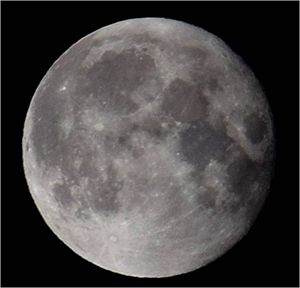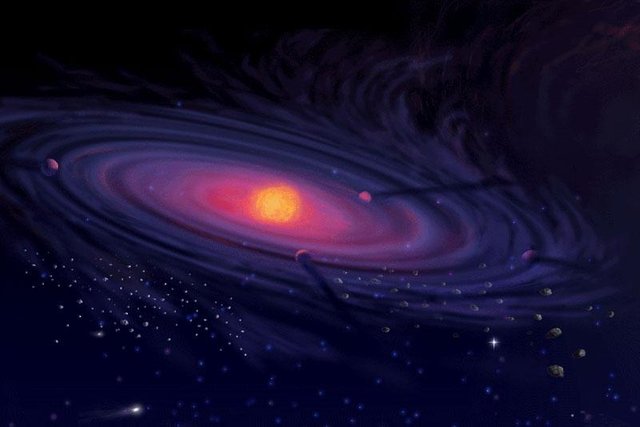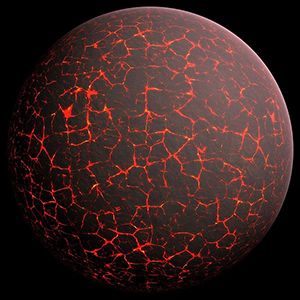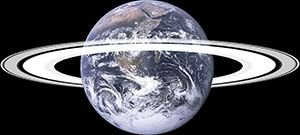THE BIOGRAPHY OF THE UNIVERSE - Earth's Evolution (Part 3)
And there we have it! The milky way galaxy, being driven by the quasar at its core. It continued to form new cosmological bodies following simple procedures that inevitably led to the creation of the earth.
How did it happen?
It all started about 4.5 billion years ago. At the beginning of our solar system, when a star probably light years away, reached the end of its lifespan and exploded into a supernova, causing a shock wave that carries energy through space.
A shock wave, defined in physics terms is the sudden and outrageous progression of wave perturbation. Any form of wave motion that has a disturbance faster than the speed of sound is called a shock wave. Similar to the regular type of wave motion, this type of wave also transports energy from one point to another, it is just faster and way unceremonial.
The place we call our solar system today was only filled with space, dense gas clouds and dust. As the disturbance from the shock wave reached the gas clouds and dust, they began to slowly adhere to each other. This process is driven by gravity continued until it got to a point so hot, hot enough to trigger nuclear fusion.
This process created a nebula at the core of the gases and it remained hot as the dust gathered to form what would look like a 'Disk'. The dust gained angular momentum and began to rotate at a very high speed, going around the nebula.
Angular momentum is the force that illustrates how the moon revolves around the earth and how the earth revolves around the sun.
Inside the rotation, there was absolute chaos, due to the turbulence that resulted from the rotation. Tiny particles of dust violently struck each other, gradually transforming themselves to much bigger particles and as time passed the growth continued. The particles grew to become rocks and their individual gravitational strength kept making sure that these, now rocky form of matter, combined until they became thousands of kilometers large, their growth ranging from normal size of asteroids to the size of a moon - at this stage, the collection is now called a protoplanet (large cosmic bodies that have the potential of becoming a planet). Presently, this event isn't new to the universe, every point in time, at some corner of the universe this process of gathering is taking place. The process is called accretion and it is responsible for how galaxies, planets and even stars form.
The occurrence of accretion led to a situation where the things in our solar system were hot dense nebulae and a whole lot of protoplanets. Due to certain external conditions, the rotating bodies gradually lose their angular momentum. This reducing torque allowed gravity to make the nebula cave-in even more to itself, gathering hydrogen nuclei and fusing them to produce helium. Before long this resulted in the formation of a baby star. The protoplanets kept rotating and with time they integrated into planets, forming separate round orbits in the protoplanetary disk around the sun. By now the earth had formed, resulting from a process of accretion that took about 20 million years.
For a while, after the earth was formed, it remained completely uninhabitable to the kind of biological life-form we now know of. The temperature of the earth was very high, the absence of oxygen left the earth without any form of the Ozone Layer. This allowed the burning penetration of ultraviolet light from the sun to reach the surface of the earth.
At this Era of the earth's development, it was the approximate description of what most people would call Hell. That's why this stage of the earth is called The HADEAN ERA - named after the Greek God of the underworld, Hades. Talk about Creepy!!
Anyway, scientists calculated that this stage of the earth took place about 4.4 billion years ago, just after the formation of the earth.
The Moon
During the Hadean Era, our solar system was still filled with debris like meteor rocks, protoplanets, dust and gases. With these large astronomical bodies moving about - all having their different levels of gravitational strength - a protoplanet collided with the earth. This collision set in process the events that consequently led to the formation of our only natural satellite - The Moon.
This catastrophic occurrence discharged so much energy forcing the outer layer of both planets to melt in the heat and shoot out of the earth's atmosphere. Debris from the layer shot out just far enough, all the rocks cooled and formed a ring-like structure orbiting the earth.
Within a few months, gravity allowed the recollection of what was left from the two planets ultimately creating one large sphere. The earth then looked like a round ball with lots of rocks revolving around it - much like how rocks form the rings of Saturn. These rocks also recollected themselves and within a very short amount of time their accretion created the moon.
Evidence suggests that the earth has had three different atmospheres. The first atmosphere must have been abundant with elements like hydrogen and helium. This atmosphere was promoted to the earth because of its prior interaction with the solar nebula and relative to the time scale of evolution it lasted for a very short time. We think that the hot temperature of the earth's crust and solar wind must have been responsible for the large expulsion of these gases and even up till now these two gases are rare in the earth compared to the solar system.

View of the moon by Exoplanet Expert with Creative Commons Attribution-Share Alike 4.0 International license.
The second type of atmosphere we think the earth had, was as a result of the collision between the earth and the protoplanet which led to the production of some vaporizing gasses that filled the earth's atmosphere. The earth was filled with these vaporizing gasses until the production of greenhouse gases from the intense activities that occurred in the volcanoes.
The third atmospheric state of the earth was reached as the earth cooled down enough to support the first form of life that introduced oxygen on the planet - a certain kind of Bacteria. This oxygenated atmosphere filled the earth about 2.8 billion years ago.
The processes that led to the various life forms present on the earth will be discussed in subsequent episodes of this article.
Remember, all these different gases are just different forms of the same thing; atoms and molecules taking different particular arrangements. The different arrangements that form this difference in elements, appear to have been caused by a number of different external factors. While some people believe it was all designed, others think it is all a product of chance. Water appears to be nothing more than two hydrogen molecules that stuck with one molecule of Oxygen H2O. You could say it's a kind of a threesome.
Anyways, with time, the oxygenated atmosphere of earth became filled with other elements like carbon, nitrogen and water vapour. Other external bodies, like tiny protoplanets, comets and meteors fell on earth, bringing with them other elements; some even already carrying water. We are certain these events took place because even now, that our solar system has a reduction in activities compared to that period, we still observe meteorites hitting the planet, bringing different elements with them.
Time passed and the earth's temperature dropped, clouds formed from the water vapour creating rain which fell into vast sloppy landmarks that created oceans. Scientists think that the first oceans may have actually formed as far back as 4.3 billion years ago. Oceans must have been long existing before biological life.
This idea is still under dispute, however, we now know that stars become more luminous with time. This implies that at that stage of the earth evolution, the Sun would have been less powerful. But as time went by, it increased in luminosity, reducing the very little amount of water on the earth, simultaneously. Another theory Suggests that the earth must have been so far from the Sun it would have been a ball of ice - just like Pluto - and as it got closer it lost a lot of its water. There are so many theories regarding this.
Still...
While all these things happened on the earth, other planets were also going through their own different forms of evolution. Present evidence shows that the Earth's brother planet, Mars, had an abundance of water during the early stages of its life. This increases the chances of life having existed on the planet in times past. NASA has also observed that one of the moons of Jupiter has an abundance of water covered with an icy layer.
Water is a very important tool for biological life so there could be some form of biological life in Jupiter's moon this very moment.
REFERENCES
HOWSTUFFWORK | How the Big Bang Theory Works
PHYSICS OF THE UNIVERSE | Timeline of the Big Bang




You received a 60.0% upvote since you are a member of geopolis and wrote in the category of "geology".
To read more about us and what we do, click here.
https://steemit.com/geopolis/@geopolis/geopolis-the-community-for-global-sciences-update-4
From what I can tell, it's factually accurate!
I'm glad you even included that a distant supernova might/could have set the beginning of the suns existence.
Your positive feedback is much appreciated. I enjoyed your second Sun | Outlook on Fusion Energy post, fusion power is a great potential as a better energy source.
I was kind of puzzled when I read about the quasar at the center of the Milky Way. I did some research and this is some new thing. The black hole that we have in the middle of the Milky Way went through a quasar phase that ended up like 6 millions years ago!
I am happy to heave learned something here :)
Absolutely, the milky way galaxy has experienced several massive changes over the course of time, and will continue to do so, long after humanity's existence.
I am deeply honored
The quasar stuff was actually pretty new. This was discovered like 2 years ago :)
This article suggests that quasars were discovered in 1963 by Maarten Schmidt.
Yes, but we are not talking about quasars. We are talking about the quasar who was lying at the center of the Milky Way (and that is today a black hole). I was referring to the fact that our black hole was a quasar who turned into a black hole (and this is a super fresh news).
Oh. You're absolutely right about that!
Thanks to read that we agree ^^
Hehehe... Not much of a fan of geology but i enjoyed reading some parts of post.
Great content ps i learnt new things
Geology is a fascinating subject, it really is. I am glad that you learnt something here.
So that's why it is usually portrayed in movies how it is possible to live in Mars and Jupiter because of the presence of water. But how about the air?
The atmospheric makeup of both Mars and Jupiter cannot support live right now, due to their atmospheric makeup. Jupiter's atmosphere is mainly made up of Hydrogen, while that of Mars is mainly carbon dioxide.
Some 4.5 billion years ago, Earth's atmosphere was mainly carbon dioxide, and there was little or no oxygen. But due to environmental changes, today, Earth has become habitable.
I believe in the distant future, the same can happen for Mars and Venus, who both share similar atmospheric conditions, that Earth once had.